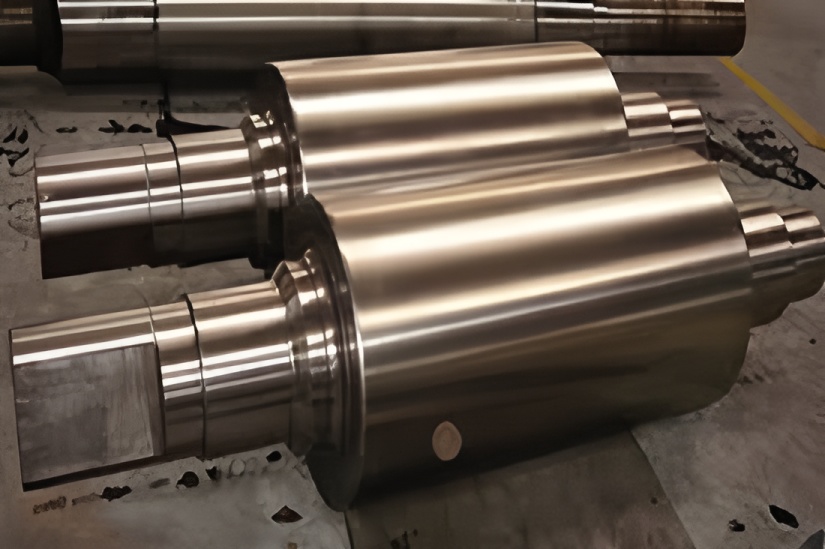How to Select the Right Rolling Mill Roll Material
Description: This article discusses the working conditions of both cold and hot rolling mill rolls, and provides guidance on how to correctly choose suitable roll materials.
Keywords: Cold rolling mill rolls, hot rolling mill rolls, mill roll material selection
How to Select the Right Rolling Mill Roll Material
Cold Rolling Rolls vs. Hot Rolling Rolls
Rolls are tools used for the plastic deformation of metal (rolled stock) and are critical consumable components that determine the efficiency of the rolling mill and the quality of the output. As a core part of the rolling mill, rolls apply pressure—via a pair or set of rolls—to shape and reduce the thickness of steel. They are primarily subjected to dynamic and static loads, wear, and temperature fluctuations during operation.
There are two common types of rolls: cold rolling rolls and hot rolling rolls.
Cold rolling rolls are made from various materials such as 9Cr, 9Cr2, 9CrV, and 8CrMoV. These rolls must meet two key requirements:
The roll surface must be hardened through quenching.
The surface hardness should be within the range of HS 45–105.
Hot rolling rolls are typically made from materials like 60CrMnMo and 55Mn2. They are widely used in the processing of section steel, bar, rebar, high-speed wire rod, seamless steel tube, and billets. These rolls endure high rolling forces, severe wear, and thermal fatigue. Since they operate at high temperatures and are subject to diameter wear over use, surface hardness is not the primary requirement; instead, high strength, toughness, and heat resistance are essential. Hot rolls are generally normalized or fully quenched, with a surface hardness requirement of HB 190–270.
Working Conditions of Rolls
Working Conditions of Cold Rolls
Cold rolls are subjected to significant cyclic stress and intense friction. Key working conditions include:High and uniform surface hardness, typically above 62 HRC.
A deep hardened layer with relatively lower hardness at the roll edge.
Low hardness at the roll neck.
High resistance to cracking and spalling caused by torsional, bending, and shear stresses.
Excellent wear resistance, contact fatigue strength, fracture toughness, and thermal shock resistance.
Working Conditions of Hot Rolls
Hot rolls operate in high-temperature environments ranging from 700°C to 800°C, under heavy rolling forces. Their working conditions require:High hardenability of the roll material.
Low thermal expansion coefficient.
High thermal conductivity and high-temperature yield strength.
Strong oxidation resistance and high-temperature creep strength.
Excellent temper resistance and uniform surface hardness.
Key Considerations for Selecting Roll Materials
The roll must have good bite performance, often requiring the use of thick slab materials.
Selected materials must offer strong thermal crack and thermal fatigue resistance.
Rolls made from the material should have large diameters, long barrel lengths, and withstand high rolling forces.
The material must provide high fracture resistance and strength.
Since roughing and finishing are often performed on the same stand, the material should accommodate both large thickness during roughing and narrow width during finishing.
Material Selection for Common Roll Types
Selection of Work Roll Materials
Roughing Stand Initial Section (R1) Work Rolls:
Must possess strength, toughness, wear resistance, and thermal crack resistance. Hardness is typically around HS 40–55. Commonly used materials include 60CrNiMo cast steel.Roughing Stand Later Section (R2) Work Rolls:
Require excellent thermal cracking resistance. Typical materials include semi-steel, high-chromium steel, and high-speed steel.Finishing Stand Initial Section (F1–F4) Work Rolls:
Operate under high temperatures and heavy loads. Common materials include cast semi-steel and high-chromium centrifugal cast iron. The latter offers superior wear resistance, thermal crack resistance, and helps prevent surface spotting defects.Finishing Stand Final Section (F5–F7) Work Rolls:
Used in the final rolling stage, directly impacting product quality and surface finish. Requirements include high hardness, wear resistance, indentation resistance, spalling resistance, and thermal crack resistance. Typical materials include indefinite chilled iron (standard or improved grades).
Material Selection for Backup Rolls and Vertical Rolls
Backup rolls, used in both roughing and finishing, must exhibit good thermal crack resistance, wear resistance, fatigue resistance, and high strength. Common materials include composite cast steel and alloy forged steel (e.g., Cr3, Cr5).


